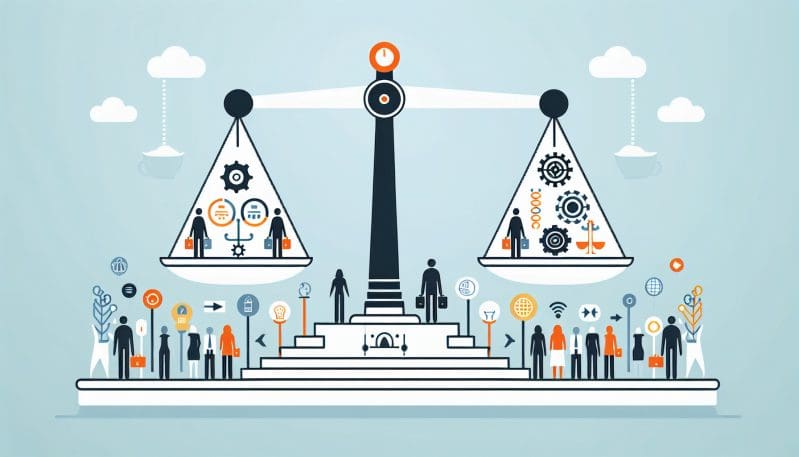Bridging the Skills Gap in the Age of Automation: Inclusive Strategies for Future-Proofing Our Workforce
- Home
- Bridging the Skills Gap in the Age of Automation: Inclusive Strategies for Future-Proofing Our Workforce
- Editors Desk
- January 22, 2024
- 0 Comments
In a rapidly evolving job market, where automation and digital transformation are altering the landscape at an unprecedented pace, workers around the world are facing both opportunities and significant challenges. The fear of job displacement looms large as technology advances, but the situation is not without hope. In this blog post, we will delve into the critical topic of bridging the skills gap in the age of automation, emphasizing inclusive strategies that enable all sectors of society to remain relevant and competitive in the workforce of tomorrow.
Introduction:
The current state of the workforce is in a constant state of flux. Technological changes are reshaping industries, leading to the creation of new roles and the redundancy of others. The skills gap, a longstanding issue, has been exacerbated by these rapid advancements. This gap poses a particular threat to workers in demographics not traditionally covered by platforms like the World Economic Forum, who may lack access to resources for upskilling and reskilling.
Assessing the Challenges:
Key factors contributing to the skills gap include educational disparities, socio-economic barriers, and a mismatch between the skills workers possess and those demanded by the modern economy. Ignoring the diverse needs of workers, especially those who are lower-income earners, immigrants, or older, can result in a workforce that is ill-prepared for future demands, leading to increased inequality and economic stagnation.
Inclusive Strategies for Upskilling:
To combat these challenges, we need collaborative efforts from businesses, governments, and educational institutions to create upskilling programs that are accessible to everyone. Initiatives like targeted vocational training, partnerships with tech companies, and subsidized education can help bridge this gap. We can draw inspiration from successful case studies globally, where non-traditional worker demographics have been given the tools to thrive in the digital economy.
The Role of Digital Transformation Experts:
As digital transformation experts, our role in designing workforce development programs is crucial. We have the expertise to identify essential skills for various industries and how best to cultivate them. By focusing on inclusivity, we can ensure that workers from all walks of life have the opportunity to remain competitive and engaged in the future job market.
Leveraging Technology for Inclusive Education:
Online platforms offer an unprecedented opportunity to democratize education. Ensuring digital literacy is a foundational step in empowering workers to utilize these tools effectively, thereby closing the skills gap. By making learning resources more widely available, we can foster an environment of continuous professional development.
Policy Considerations for Future-Proofing the Workforce:
Policymakers play a pivotal role in shaping the landscape of workforce development. They can enact policies that encourage partnerships between the private sector and educational institutions, invest in lifelong learning initiatives, and provide incentives for businesses to prioritize upskilling their employees.
Call to Action:
Stakeholders across all sectors must embrace the ‘No Worker Left Behind’ ethos and actively participate in narrowing the skills gap. Readers can contribute by advocating for policy changes, supporting upskilling programs, and committing to their personal learning journeys.
Conclusion:
In summary, the journey to an inclusive, adaptable, and resilient workforce requires a multifaceted approach. While the challenges are significant, so are the opportunities. With a concerted effort from all corners of society, we can not only navigate but also thrive in the future of work, fostering a landscape rich with growth and innovation.


Leave A Comment